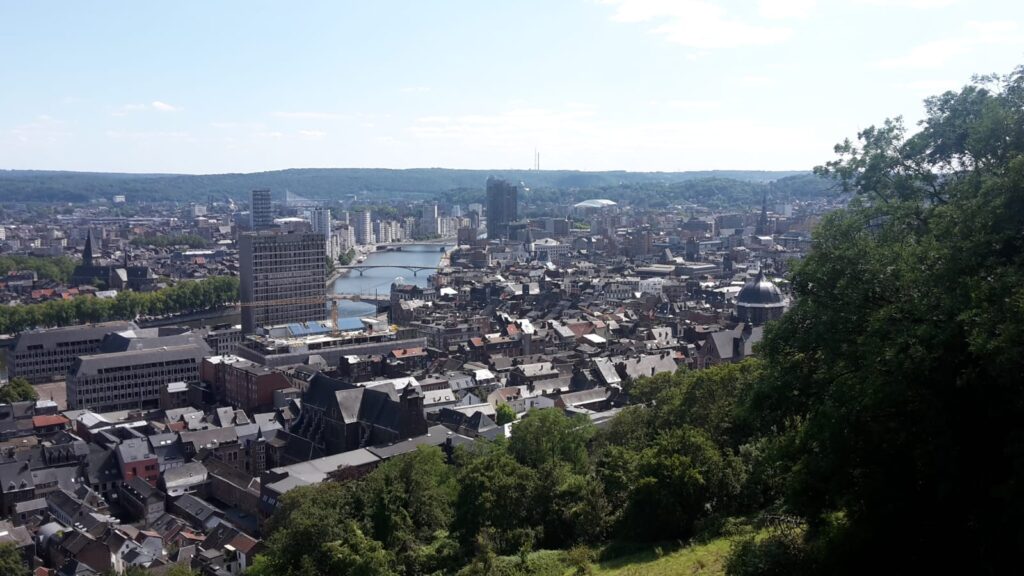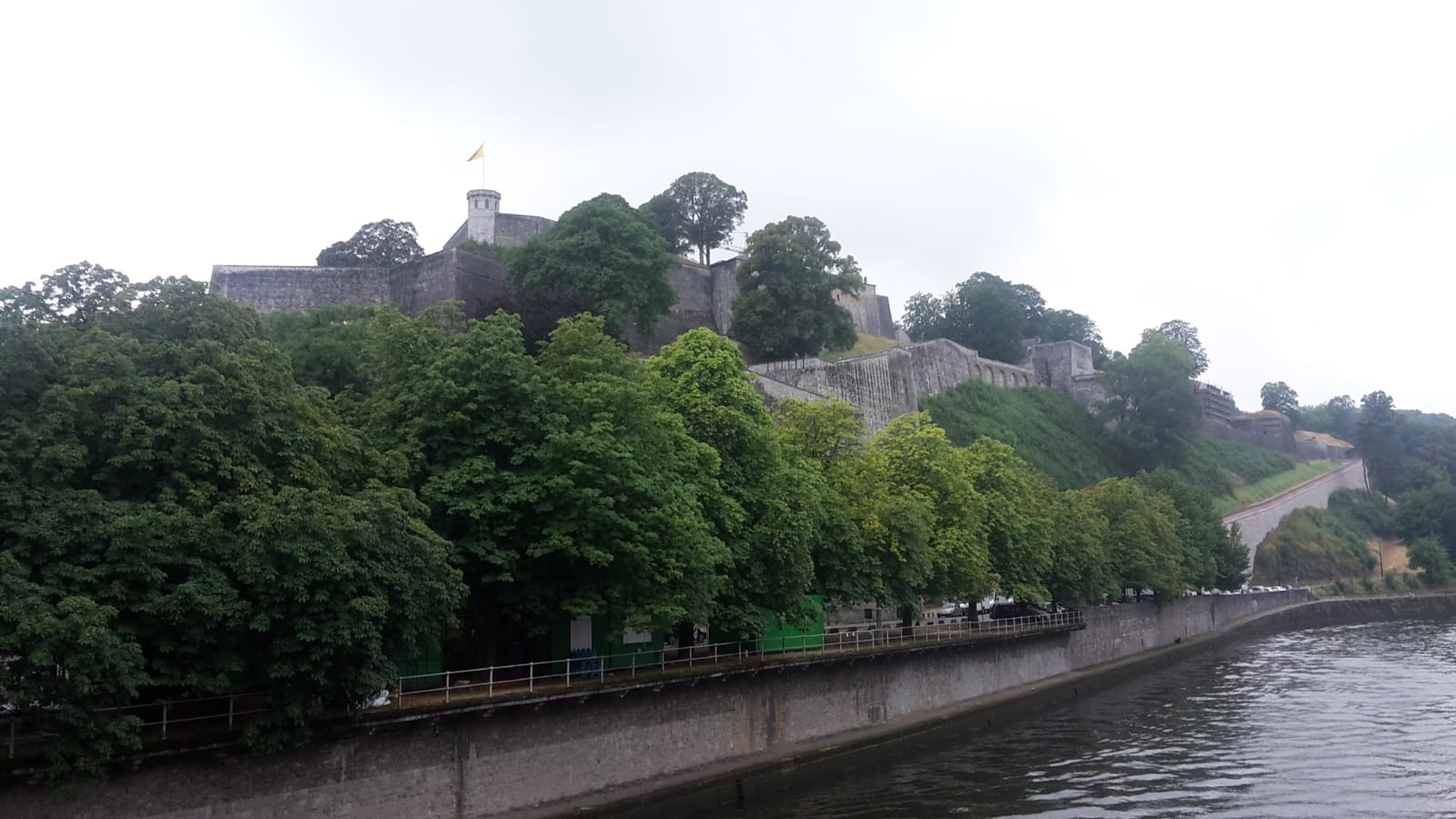Coincidentally, I happened to be in Belgium visiting the old citadels of Namur and Liège when someone posed these questions to me: “What is the use of a buffer zone? And why do they still make sense given the existence of weapon systems with a long range, like ballistic missiles and jets?” Although now long gone, the ‘southern Netherlands’ were often regarded by its great power neighbours as little more than a region offering strategic depth.
Slowing the Invader
First off: what is a buffer zone? Its application in strategy is manifold, but at least it is a region that ideally does not include the economic, industrial or demographic heartland of the country or countries that perceive it as a buffer zone. Instead, such a territory is often meant to serve as pillow that prevents or softens a military blow or other outside force potentially hurting the heartland.
Seventeenth- and eighteenth-century Namur and other walled towns that made up the ‘barrier fortresses’ served the Dutch Republic as buffer zone. Between 1672 and 1748, long, devastating and expensive wars were fought against France, the military juggernaut of early modern Europe. Although rich, the Republic proper was tiny, and therefore it sought to establish footholds as far to the south as possible.
The immediate vincinity of the bastions was anything but Dutch heartland: it belonged to the Spanish and later Austrian Habsburg monarchy, allies who by treaty allowed the Republic’s troops on its territory. The Dutch even hardly relished the thought of holding the fortresses in case of war. After all, full complement garrisons were expensive. Instead, they relied on the time and military energy it would take the French to lay siege to those towns.1Olaf van Nimwegen, De Republiek der Verenigde Nederlanden als grote mogendheid: Buitenlandse politiek en oorlogvoering in de eerste helft van de achttiende eeuw en in het bijzonder tijdens de Oostenrijkse Successieoorlog (1740-1748) (Amsterdam: De Bataafsche Leeuw, 2002), 13-35.
Sieges were long processes that required surrounding and digging towards towns, all the while keeping up an artillery bombardment and negotiations at the same time. And if all else failed – an attempt by storm. During the Nine Years’ War (1688-1697) defenders and besiegers at Namur suffered two bloody assaults. Despite France’s sizes, sieges were so expensive that only about one could be conducted at a time. Therefore it is understandable that after successfully besieging Namur in 1692, they moved heaven and earth to drive the Dutch and their allies away from the town: its fortifications were partially destroyed and in the process of being repaired. After the allies retook them in 1695, their army was so wrecked that they refrained from launching other offensives for the remainder of the year.2Pádraig Lenihan, “Namur Citadel, 1695: A Case Study in Allied Siege Tactics”, War in History 18:3 (2011); John A. Lynn, The Wars of Louis XIV 1667-1714 (London & New York: Routledge, Taylor & Francis Group, 2013 (First published in 1999)), 223-227, 247-250, 371.
By ‘trading’ territory for time, the Dutch could establish alliances and recruit more soldiers. In a modern context, say the present-day Middle East, conscript-reserve armies are the norm. While the enemy is wasting time and energy crossing the buffer zone, a country calls up its reservists: civilians previously conscripted and redonning a uniform in times of national emergency to fulfill military tasks, be they on the frontline or in rear echelons.3David French, “The Nation in Arms II: The Nineteenth Century”, in The Oxford History of Modern War, Charles Townshend ed. (Oxford: Oxford University Press, 2005 (First published in 1997)), 74-93; This European manner of social and cultural configuration found its way into the rest of the world throughout the late nineteenth and twentieth centuries, see Jeremy Black, War and the World: Military Power and the Fate of Continents 1450-2000 (New Haven & London: Yale University Press, 1998), 276-279.
Preventing Conflict?
Walking the grounds of Namur citadel felt a bit strange: the carnage was long gone and, if anything, had contrastingly made way for a quiet and pleasant park elevated into the air. Some part of humanity tends to value peace. At an increasing rate, buffer zones are imposed to prevent an already ongoing war to spill over into one’s own country, or by a third party (sometimes the UN) on two conflicting entities.
Yet, establishing such regions also opens up offensive options. Lionel Beehner & Gustav Meibauer even argued that buffer zones hardly prevent conflict, but offer opportunities to aggressive states in the guise of defensive operations. Militarily and in terms of international law, buffer zones are often poorly defined, allowing for a flexible interpretation by the country occupying the territory.
In the ongoing Syrian War, a potential buffer zone on Syrian territory would greatly help Turkey in obtaining their strategic goals. Ultranationalist parts of Ankara’s political establishment would gain new bases of operations from which to strike at Kurdish paramilitary organisations. To them the Kurds are little else than a threat to be dealt with. And, if Turkish strategy is about oil instead of a dissident people, as Michael Rubin suggested, a buffering territory encompassing oil wells certainly helps too. That is especially true when wresting them from Syria, a country that went from awkward Turkish ally to “intractable enemy” throughout previous decades. Lastly, a war could distract Turkey’s populace from internal political and economic failings.
But Beehner & Meibauer also recognised a problem: an increased involvement in the chaos of Syria could lead to unintended consequences, while the Turkish military sinks into a swamp it cannot easily retreat from.4Lionel Beehner & Gustav Meibauer, “The Futility of Buffer Zones in International Politics”, Orbis 60:2 (2016). Some Dutch politicians in the 1710s feared something similar: perhaps ‘too much’ buffer zone would drag them into conflicts with other major powers.5Van Nimwegen, De Republiek der Verenigde Nederlanden als grote mogendheid, 13-35. Although too extensive to be answered now, an important question would be what the exact links were between the Dutch buffer zone and their descent into war during the 1740s.
From the Sky the World is too Small
Many countries in the Middle East have ambitions similar to defeating the Kurds: Israel‘s far-right seeks to create a ‘Greater Israel’, mostly at the expense of Jordanian territory. Iran is often accused of rallying its allies to utterly wipe out Israel as state, and perhaps as nation and idea. They also express a strong tendency to spread their Shia Islamic state ideology.
Military airmen have tried to make the case of strategically overwhelming air power ever since WWI to advocate and legitimise their independent existence within a country’s armed forces. Often they operated as subpart of the army or navy. As a result airmen had a tough time reaching the levels of military and political power their cousins on land and sea possessed. However, as it turned out, the (extreme) strategic goals mentioned above cannot be attained by air power alone.
Focussing on ‘strategic bombardment’, i.e. forcing an enemy country to surrender by destroying its economic, industrial and demographic capabilities, the United States and British Empire fielded the best long-range air forces of their time. Yet, nazi Germany only surrendered after being invaded and occupied. The US Air Force used even more explosives on the North Vietnamese – they never surrendered. 6
Richard Overy, “Air Warfare”, in The Oxford History of Modern War, Charles Townshend ed. (Oxford: Oxford University Press, 2005 (First published in 1997)), 262-279. Still, in flat terrain like Middle Eastern deserts that offer little protection, air superiority is often a necessary condition for victory. However it is hardly a sufficient one if a country seeks to control territory: the air force still needs the army more than vice versa.7John Buckley, “Air Power”, in Palgrave Advances in Modern Military History, Matthew Hughes & William J. Philpott eds. (New York: Palgrave Macmillan, 2006), 163-166.
Even if they would want to do strategic bombing, Middle Eastern air forces lack strategic bombers. Often, they consist of close-air support jets, built to tactically or operationally aid ground forces.8Black, War and the World, 282-286. And whereas Israel and Turkey are modernising, much of the other jet fleets are still made up of Cold War-era hardware. Targeting enemies like Kurdish paramilitaries also carries with it the risk of hitting civilians. Even if some extremist Turks don’t care for that themselves, it might turn the rest of the world against Turkey.
In short, goals like defeating dissident groups, destroying hostile countries or obtaining valuable resources require a presence on the ground in which air power has a supporting role. Establishing buffer zones aids and enables that presence on the ground, and therefore they are very useful tools to states. On the other hand they might entail being pushed into new conflicts rather than granting a position of control. Sadly, in all cases wars are made likelier and prolonged.
“No Picture Can Convey A View”
Liège citadel was partly deconstructed to make way for a hospital. Forts being forts, this one too is situated on a hill, inviting me and my traveling companion to climb a huge staircase. Upon reaching the top, the city and the Meuse valley stretched out before us. Being good tourists, we made some photographs, after which she remarked that “no picture can properly convey a view”. Perhaps humans bring home images primarily to prove that we were somewhere, or to invoke awe within others. Or, more benign, maybe we make the actual pictures in our heads, while the one on our phone serves only as memorial gateway to it.
To most of history that is all we have: objects offering portals to images in our minds, most of which we create ourselves rather than having seen the original circumstances in which the objects resided. Still, without any story, the leftovers of the Liègeois citadel are a mere pile of stones. So, me being me, I enforced a story on my traveling companion about the tactical logic behind such fortifications. Soon we arrived at the part at which I told that in the decades before WWI, such structures had become obsolete.
Instead, more modern forts were constructed around Liège, as an answer to more technologically advanced artillery. Yet those defensive works were pounded into submission by the Germa… “What, actually, was Germany’s motivation to invade Belgium in 1914?” she interrupted me – “Well, there were these Balkan tensions,” I replied, slowly spiralling into a conversation about the Great War.
History is more than merely a fun and interesting subject to talk about. If we forsake to tell each other stories condemning war and genocide and extreme forms of nationalism, we run the risk that malevolent others will freely claim the past. Therefore, engaging in historic debate by asking questions and forming opinions is not some luxury. It is a duty and a prerequisite for a peaceful society, serving as mental buffer against war.
But yeah. It’s a duty I’m very much okay with.

